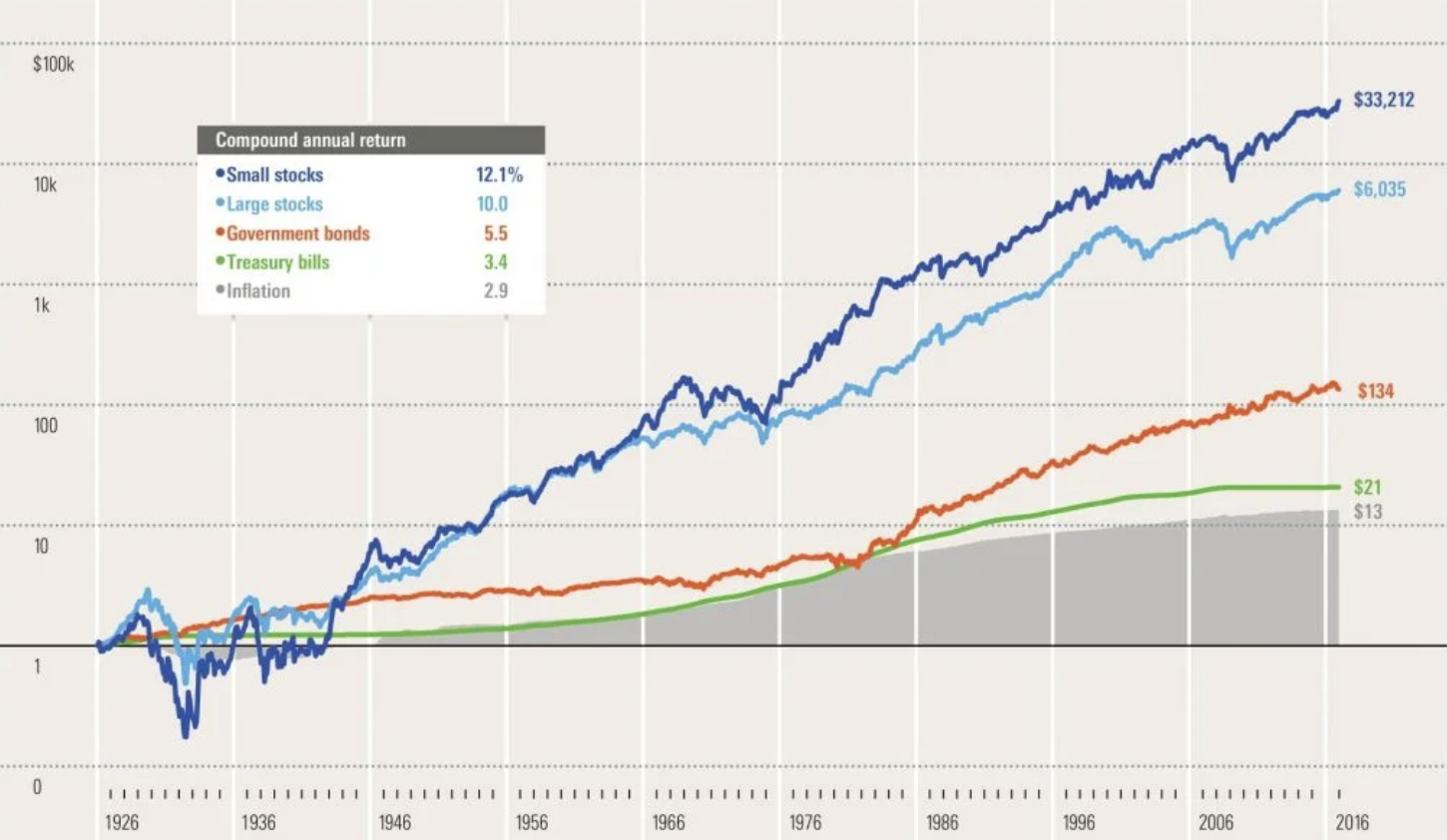Inflation can eat away at the value of investments or money in people’s pockets. It reduces purchasing power and leaves people with less money. Fortunately, there are strategies investors can use to hedge against inflation and protect their capital. In this article, we’ll discuss the best ways to protect wealth from inflation.
What is inflation?
Before diving into the specifics of hedging against inflation, let’s take a moment to understand what it is as well as how it works. Inflation is a measure of the rate at which the general price level of goods and services in an economy is increasing over time.
Inflation is typically measured using a consumer price index (CPI), which tracks the prices of a basket of goods along with services over time. When the CPI increases, it indicates that inflation is rising, and vice versa.
Related article: Building an investment portfolio – 5 easy steps
Inflation has a significant impact on money, reducing its value over time. Let’s take a look at how inflation affects different asset classes and why it’s important to consider real returns when investing.
How inflation affects different asset classes
Inflation can impact different asset classes in different ways. Stocks, for example, may be less affected by inflation than bonds, as companies can often increase prices to keep up with rising costs.
Real estate rises in value in the long run despite the inflation levels. However, commodities usually increase in price depending on demand and supply, as well as inflation levels. When investing, it’s important to consider not only nominal returns, but also real returns.
Look how different assets slowly but surely beat inflation in the long run, ensuring people’s money are increasing over time. Money sitting in a bank account is the worst kind of investment.

Annual return of different assets vs inflation, source: 4investors.eu
Nominal returns are the returns received on investments before adjusting for inflation, while real returns take into account the impact of inflation on purchasing power. Even if an investment delivers high nominal returns, if inflation is also high, the real returns may be lower. Therefore, it’s crucial to choose investments that can deliver positive real returns over time.
Now that we understand the impact of inflation on investments, let’s discuss some strategies investors can use to hedge against inflation and protect their portfolios from its effects.
Strategies for hedging against inflation
Diversifying a portfolio may help hedge against inflation by spreading investments across different asset classes. By investing in a mix of stocks, bonds, real estate, or commodities, investors can reduce overall risk and increase the chances of achieving positive real returns over time.
Treasury inflation-protected securities, or TIPS, are bonds designed to protect against inflation by adjusting their principal value based on changes in the CPI. They ensure that the real value of the investment stays the same over time. While TIPS may have lower nominal returns than regular bonds, they are a good option for investors looking to hedge against inflation as we have experienced since 2021.
Read more: Best stock market podcasts: List of TOP 10 podcasts you need to follow
Commodities, such as gold or oil, and real assets, such as real estate or infrastructure, can be good investments to hedge against inflation. These assets tend to be closely tied to inflation and can provide a hedge against rising prices. However, investors must carefully consider the risks associated with these investments, as they can be volatile and subject to sudden price fluctuations.
Real estate investments, such as rental properties or real estate investment trusts (REITs), can also provide a hedge against inflation. Real estate prices tend to rise with inflation, and rental income can also increase over time. However, investors must remember that real estate investments can be illiquid and difficult to sell as a result.
Dividend stocks can be a good option for investors looking to hedge against inflation, as they tend to offer a steady income stream over time. In addition, companies that pay dividends are often well-established and have a history of weathering economic downturns.
However, investors must remember that stocks can be volatile and subject to sudden price fluctuations, so it’s important to carefully select dividend-paying stocks that are well-suited to investment goals. Dividend stocks are mostly very liquid if traded on the US stock market. Some of these stocks can include Coca-Cola, Proctor & Gamble, and more.
Portfolio adjustments for lower risk
It’s important to actively manage inflation risk in investment portfolios to ensure they continue to hedge against inflation over time. That doesn’t mean daily evaluation, but a few times a year. Before making any investments or changes to portfolios, it’s important to assess risk tolerance and investment goals.
For example, if the goal is just to protect money from rising inflation, TIPS would do the trick. If an investor wants higher returns than inflation, stocks or cryptocurrencies might help here. Risk tolerance will determine the types of investments that are best suited to their needs and will help investors determine how much risk they’re willing to take on in pursuit of higher returns.
Also read: Make more, spend less – 5 steps to wealth generation
Rebalancing portfolios from time to time can help stay on track with investment goals and ensure portfolios are properly hedged against inflation. By adjusting allocations as needed, investors can maintain a balanced portfolio and reduce overall risk over time.
Conclusion
Protecting portfolios against inflation is an important part of ensuring long-term financial success. By diversifying portfolios, investing in inflation-protected securities, or actively managing investments, investors can minimize the impact of inflation on wealth and ensure that investments continue to grow over time.
Remember to always consider both nominal as well as real returns, and to adjust investment strategy as needed to stay ahead of changing market conditions.
The concept of #diversification – investing in various assets – was popularized by Nobel Prize winner Harry Markowitz in the 1950s 💰📊#fact #investing #investor #investment #stocks #cryptocurrency #forex #commodity #analysis #trading #trader #academy #market #investro pic.twitter.com/tfLRmcXP0U
— Investro.com (@investrocom) April 25, 2023











Comments
Post has no comment yet.